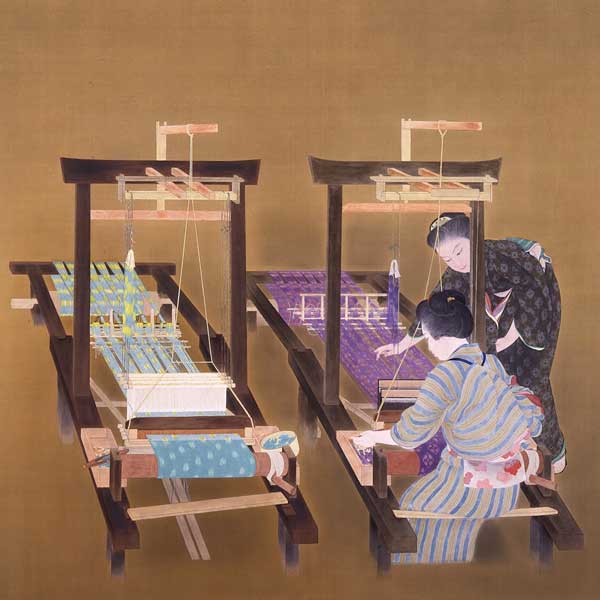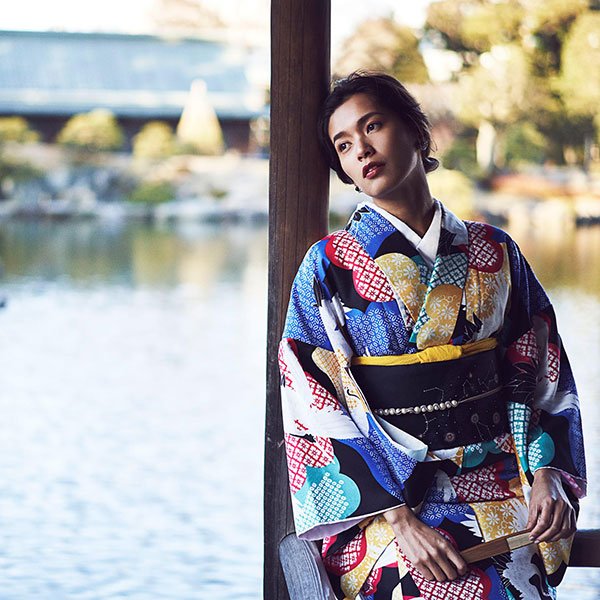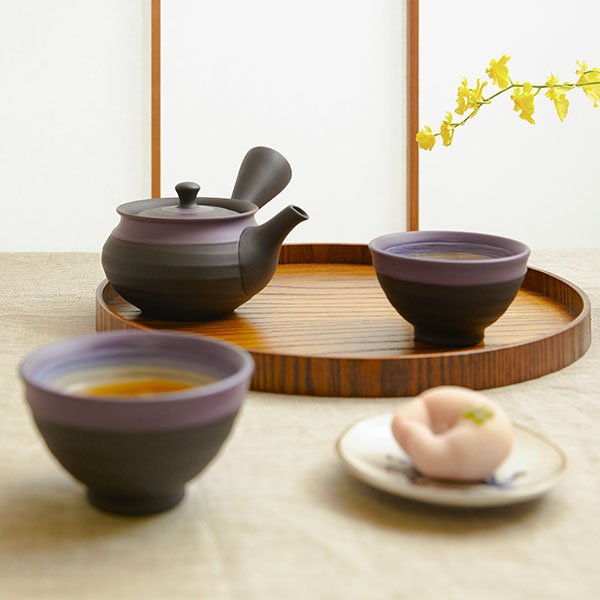Japanese Craft Beer: 6 Things You Should Know
by Cole Lubchenko | LIFESTYLE
© Vertere, Pomegranate Sour Beer
Beer might not be the first drink you think of when you think of Japan, but if you step foot in just about any izakaya, you will find that the bulk of patrons are downing frosty mugs of crisp and clear lager. Of course, sake is Japan’s traditional drink, and no one would argue that beer is more culturally important than sake, but in terms of what Japanese people actually like to drink, beer is the clear winner. If you have ever experienced a summer in Japan, you know that nothing beats the humidity like an ice cold lager in a chilled glass. Not only does a crisp Japanese beer cool you down on a hot day, but it is the perfect match for the salty and oily dishes that make up the menus at most local watering holes. Beer is a major part of drinking and dining culture here, and the rapid rise in Japanese craft beer’s popularity has been reinventing this whole scene.
1. When was Beer Introduced to Japan?
Beer Advert, Early 20th Century
The introduction of beer to Japan happened in the 17th century during the Edo era when Dutch traders brought beer to Kyushu; however, due to the extreme restrictions on trade during this period it took several more centuries for it to see increase in popularity.
At the start of the Meiji Era, Norwegian-American brewer William Copeland set up shop in Yokohama and introduced Japan to the brewing techniques he learned while working as an apprentice to a German brewmaster in Norway. He founded Spring Valley Brewery in 1869, which was popular for several years and served German style beers to Yokohama. Unfortunately, due to poor management, the company was not profitable. In 1885, they sold their equipment to Japan Brewing Company, which would later become one of Japan’s major breweries: Kirin Brewery Company. This marked the start of the modern era of Japanes beer.
2. What is Japanese Beer? Understanding Beer and Happoshu.
© Ikadogen, Apple Beer
When beer was introduced to Japan it was heavily influenced by German beer culture. Beer was made using European ingredients and people had little interest in innovating Japanese beer styles or using local ingredients. One part of German beer culture that made it over to Japan was the Reinheitsgebot, or German beer purity law. The German beer purity law restricts which ingredients can be added to beer. In Germany that means that beer must be made only from malt, hops, and water; yeast was added centuries later when it was formally discovered.
© Spring Valley Brewery, Beer on Tap
Japan isn’t quite as strict as the Germans when it comes to beer. For this malty fermented alcoholic beverage to wear the label of beer in Japan, it must be made from malt, hops, and water, but it can also include up to 33% adjuncts like rice or corn. Anything that is over 33% adjuncts must be classified as happoshu. Happoshu is often much cheaper than beer, and therefore is quite popular; however, in recent years, the tax on beer has been reduced, and the tax on happoshu increased, so the prices are beginning to merge which greatly favors the sale of beer.
© Far Yeast, Japanese Craft Beer
Since craft beer frequently makes use of ingredients other than malt, hops, water, and permitted adjuncts, craft beer in Japan is often labeled as happoshu, even if it contains over the requisite 67% malt content. Such beers are still very much beer by all but the strictest definitions, and they are usually of very high quality. Many Belgian beers also get categorized as happoshu do to their inclusion of coriander, orange peel, and other fruits and spices.
3. What Makes Japanese Craft Beer “Craft”?
In the United States, craft beer is defined as beer produced by a brewery that produces less than 6 million barrels per year, while craft breweries cannot have more than 25% of the company owned by a beverage alcohol industry member who is not a craft brewer. Japan does not have a formal definition for craft beer, but the term craft beer is closely associated with beers other than the standard lagers from the most well-known Japanese beer brands: Asahi, Kirin, Suntory, and Sapporo (speaking of which, here are 5 Things You Might Not Know About Sapporo Beer). Usually beers labeled craft in Japan are more hop forward beers like pale ales, and IPAs, but there has been more diversity entering the market in recent years.
Because there is not a formal definition for craft beer in Japan, Japan’s larger breweries have misappropriated the term and stuck it on their more hop-forward mass produced beers in an effort to gain some of the burgeoning craft beer market. However, one would be hard pressed to find a definition of craft beer that is congruous with the mass manufactured ales being released by these companies. Some have even taken to calling these craft-y beers.
© Far Yeast, Craft Beer Ingredients
Craft beer, whether a formally recognised term or not, generally refers to beer that is brewed creatively at a relatively small scale, and makes use of some experimentation and passion. Of course these terms carry with them some amount of marketing magic, but there also must be truth behind them. Craft beer is not restricted to wacky beers like peanut butter fudge stouts or obnoxiously hoppy and bitter IPAs, any beer that is enthusiastically brewed on a small scale using a careful selection of ingredients might be considered craft.
4. Why is Japanese Craft Beer So Popular?
© Vertere, Brewing Craft Beer
In 1994 beer in Japan changed. Prior to then, beer had to be brewed in quantities of at least 2 million liters annually. In the early 90’s the smaller breweries were generally called ji-biru, and were often operated by resort owners or sake brewers. After 1994, the beer tax law changed, and brewers were able to operate at significantly smaller capacities. A beer license would allow you to brew at 60,000 liters, and a happoshu license allowed you to brew at 6,000 liters. This made brewing much more accessible, and as a result, loads of small craft brewers popped up in the years following this tax revision.
© Vertere, Pomegranate Sour Beer
After this initial craft beer boom, the number of smaller Japanese breweries became unsustainable; only the strong and lucky survived. Many small breweries in Japan remain financially tied to other industries like hotels, sake breweries, and restaurants, but the number of truly independent and passionate craft brewers has grown significantly, and continues to grow. The small ji-biru brewers that were tied to these other industries often produced beer that wasn’t up to the standard of the big players like Asahi and Kirin, so craft beer brewers have long been fighting to separate themselves from those mediocre beers. Recently, they have been winning that fight and craft beer is becoming more diverse, more available, and more appreciated.
5. What is the Best Japanese Craft Beer?
Today craft breweries in Japan come in all shapes and sizes. From major operations like Kirin-owned Spring Valley brewery (named after the original Kirin brewery), to tiny operations like Setagaya’s Riot Beer, there are a plethora of options to choose from. Here is a selection of some of our favorites.
Spring Valley Brewing
© Spring Valley Brewery, Daikanyama
Spring Valley is quite firmly on the faux-craft beer side of things, but they are everywhere in Tokyo. Spring Valley is owned by Kirin and has set up two brew-pubs in the Greater Tokyo Area. One in Daikanyama, and one in Namamugi, Yokohama. While these beers might not be craft, their five or so varieties are a welcome addition to usual offerings found in restaurants and liquor stores around Japan. Due to their backing by Kirin, these beers are slightly cheaper than other craft beers and are easy to find. No one should gatekeep beer drinking, so if you like these, drink them, but we would also suggest you try seeking out some smaller independent breweries.
Baird Beer
When Baird started, they were the smallest brewery in Japan, now they have 10 tap rooms in Japan. They brew their beer in their “brewery gardens” in Shuzenji, Shizuoka. They grow organic fruit and hops to use in their beer, and run a very sustainable operation. While their beer lineup doesn’t change or evolve as fast as some other craft brewers, each beer in their core line up is delicious and well executed. If you have a chance to visit one of their tap rooms in Harajuku, Kichijoji, Meguro, Yokohama, or Osaka, you should try their wonderful Suruga Bay Imperial IPA or their Wabi-Sabi JPA, which features Japanese ingredients like wasabi and green tea.
Vertere
© Vertere, Craft Beer Selections
Vertere, is located in the far west of Tokyo near Okutama station (see map). This rural brewery is a popular place for cyclists and hikers to visit after adventures in the mountains. Founded in 2016, Vertere is relatively new, and very much micro. They generally have eight rotating taps and the beers are very modern, and experimental. Expect to find espresso IPAs, chai stouts, blueberry sours, and other creative brews, but their juicy and hazy IPAs are where they truly shine. Not only does Vertere brew excellent beer, but they have also been growing hops locally which they use in limited edition seasonal brews. This brewery is definitely worth travelling to; sitting outside in the mountains next to the Tama River and drinking a pint of craft beer is certainly special.
Hitachino Nest
Hitachino Nest started as a sake brewery in 1823 in Ibaraki, and a while later, in 1997 to be precise, Hitachino brewed their first beer. Hitachino makes use of many traditional Japanese ingredients, and does so with great success. They brew Saisons with rice koji, Ales with red rice, and fruit beers with daidai, as well as a variety of more standard beers. Hitachino is one of the few Japanese craft beers that you can find abroad. If you want to try some in Japan, visit their taproom under the Chuo Line tracks near Akihabara station (see map).
Riot Beer
Riot Beer is one of the most micro of all microbreweries in Tokyo. This tiny suburban brewpub located a short walk from Soshigaya-Okura station (see map), which happens to be home to Ultraman, started in 2018 and has been brewing excellent beers since. This little establishment has less than 10 seats and has a wonderful punk-rock attitude with beers named after songs by bands like The Germs and The Clash. If you want to find a truly craft experience, make your way out to this slightly out of the way brewpub and enjoy its relaxed local atmosphere.
Far Yeast Brewing
© Far Yeast, Kagua
Far Yeast, in addition to having one of the most creative names in the world of craft brewing, also makes wonderful beers inspired by Tokyo. Far Yeast also brews a Japanese influenced line of craft beers, KAGUA, which makes use of ingredients like sansho and yuzu. Far Yeast is quite widely available in Japan and can even be found in some convenience stores. Far Yeast also has tap rooms and restaurants in Tokyo, Atami, and Fukuoka if you want to try it from the source. If you aren’t lucky enough to try it directly in Japan, it is possible to find their canned beer internationally.
6. Where Can I buy Craft Beer in Japan?
© Far Yeast, Craft Beer Cans
Craft beer is not as easy to find in Tokyo as it might be in other major global cities, but that is starting to change. If you are in search of craft beer fresh from the source, checking out one of the above mentioned breweries is probably your best choice. If you are looking for cans or bottles, Hasegawa Liquors in Tokyo Station or Tanakaya in Mejiro are great options. If you don’t want to go too far out of your way, check department store basements’ liquor stores, or your average local liquor store, you might get lucky!













LIFESTYLE | July 28, 2023